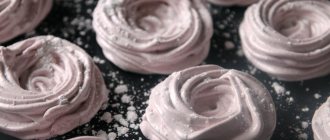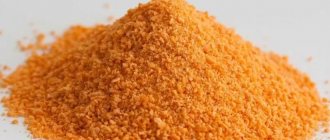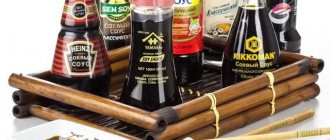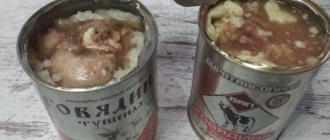What does it depend on?
The shelf life of sugar practically does not depend on the raw materials from which it is made.
Both cane and beet sugar, which together occupy 99% of the world market for this product, have the same shelf life. Such exotic types of sugar as palm, sorghum, malt, coconut, grape and maple, popular in some countries of the world, have a similar shelf life according to Russian legislation, since the active substance (sucrose) in them is the same.
The shelf life of various types of sugar is determined by the storage conditions and the type of container in which it is contained.
According to GOST
According to GOST No. 26907-86, the shelf life of granulated sugar and refined sugar in bags in heated warehouses at a temperature not exceeding +25°C and humidity not exceeding 70% is up to 8 years.
If the product is stored in warehouses that are not heated in winter, the shelf life is reduced:
- for refined sugar - up to 5 years;
- for granulated sugar - up to 1.5-4 years, depending on the container and storage conditions (GOST 21-94).
The shelf life of sugar without containers (in silos) is 2 years from the date of manufacture.
How long do different types last?
Sugar is made from products such as beets and cane, which contain sucrose. This is the organic compound from which sugar itself is obtained.
Let's consider the shelf life of various types of product:
- Cane sugar is considered healthier than beet sugar. It is made from sugar cane juice. Due to complex production technology, the price of cane sugar is higher than that of white sugar. Cane sugar can be stored for up to 8 years if storage conditions are met.
- Brown sugar is more often obtained from cane because unprocessed beet sugar does not have the most pleasant taste. The shelf life of brown sugar is the same as that of cane sugar: up to 8 years under proper conditions.
- Vanilla sugar is often used in baking recipes to add a pleasant aroma to the dish. It is obtained by adding vanillin flavoring to regular sugar. The shelf life of this substance is no more than one year. Therefore, the shelf life of vanilla sugar is also one year.
Is there a deadline?
Many people consider sugar to be an almost eternal product that can be stored for a very long time. It really retains its properties for a long time. But still, according to GOST, there is an expiration date.
Sugar should not be consumed after this period, because then it loses its properties. To prevent this from happening, storage conditions must be observed. Moreover, this applies to home and industrial storage of the product.
Storage conditions for granulated sugar
If the product is stored in large quantities, it is necessary to strictly monitor compliance with environmental conditions:
- Humidity should be limited to 70% for packaged silos, 60% for bulk silos, 75% for refined sugar.
- Temperature 20...22 °C for silos, 11...25 - heated warehouses.
- Storage should be carried out on pallets covered with fabric, tarpaulin, or bags. They will absorb excess moisture.
- The bulk product is packaged in bags weighing 10–50 kg and stacked.
- Silos must be insulated to protect them from getting wet.
IMPORTANT! It is contraindicated to store sugar together with other products, as it easily absorbs odors.
Keeping a home doesn't mean it's difficult. The main thing is to avoid humidity and maintain room temperature. If you follow these rules, the period of use can be extended for an indefinite period of time.
When there is a lot of sugar, you need to place it in a cloth bag. If you plan to use it within the next year, you can use a plastic bag. It should be located in a closed cabinet away from heat sources and odorous products.
ADVICE! If you use a plastic bag for storage for more than a year, the product will acquire an unpleasant odor due to lack of ventilation.
In addition, any container made of plastic, ceramics, or glass is suitable. Refined sugar can be left in its original cardboard packaging.
If the product is slightly damp, you can try to correct the situation. To do this, you need to place a container of rice on top of the bag, which will absorb excess moisture.
What to look for when purchasing
Currently there is no shortage; you can buy whatever your heart desires at any convenient time. It makes sense to stock up on sweet products only during the period of berry ripening in order to prepare aromatic jams, preserves, and compotes for the winter.
The rest of the time there is no need to buy a 50 kg bag. For everyday use, there are plenty of more convenient packages on the shelves: 0.5 kg, 1 kg, 5 kg.
When purchasing, pay attention to the appearance. If the product was stored and transported in accordance with GOST, it must be:
- no lumps;
- white without yellowness;
- with good flowability, not wet;
- clean, free of debris;
- with a characteristic sweet odor.
Do you know that…
Sugar is very hygroscopic. When falsifying a product (to make it heavier), a bucket of water is placed next to the bag, and in 10 days it “draws in” 4-5 liters.
To determine at what humidity the sugar was stored, just squeeze it in your fist. The dry one will crumble in an open palm, the wet one will remain a lump
How to choose good granulated sugar
When purchasing, you will be able to evaluate its quality visually, and practically at home.
- The product labeling contains: name, good if with the specified category (extra, TC1, TC2, TC3), composition, nutritional value, weight, production date, period, how to store, information about the manufacturer.
- The packaging must be tightly closed.
- The color of the crystalline substance is white, pure, like refined sugar, without stains. The factory one may have a yellowish tint.
- The consistency of the crystals with good quality is homogeneous and free-flowing. There may be lumps that fall apart when gently squeezed. But if they crystallize, then the product was not stored correctly or was kept in a humid room to increase its mass.
- The appearance of refined sugar is pieces of the same shape and size, without foreign inclusions.
- Water will also tell you about the condition of the product. You need to dissolve a couple of tablespoons of sand in a glass of water and stir. If the liquid remains clear, there is no sediment or any impurities, then the product is of high quality.
Shelf life of sugar by type
Depending on the source of raw materials, different types of this sweet food are produced (sand, refined sugar, vanilla, maple, palm, sorghum, malt, grape, substitutes), each of which has its own conditions and shelf life.
Vanilla sugar
Can be consumed for up to 12 months, as written on the packaging of this confectionery product.
However, if protected from direct sunlight and a temperature range of 11° - 25°C, the shelf life can be more than 12 months.
Maple Sugar (Agorn)
Derived from the sap of Canadian or American maple trees, the sweetener is popular in the USA and Canada. Due to its high fructose content and special aroma, it is used as a substitute for traditional “sweet gold”.
Russian legislation allows the consumption of Agorn for up to 2 years.
Palm sugar (“Gur”, “Jeggeri”, “jagre”)
An Indian sweetener obtained from the sap of date, coconut or cane palms. The amount of sucrose, fructose and glucose varies depending on the type of plant. This species is rich in beneficial minerals. It has various medicinal properties: improving digestion, purifying the blood and others.
By law, it can be stored for up to 2 years.
Crystal sugar
This type of sugar is most often found on the kitchen table. Reed and beets are used for production. Products differ in nutritional value and content of nutrients. The product is stored for up to 8 years. Of course, it is necessary to create suitable conditions. Too high air humidity is unacceptable.
Sorghum sugar
"Endangered sweet gold" extracted from the sap of sorghum stalks. Sorghum is a grass family of the Poa family. The production of such a sweetener becomes unprofitable due to the high content of substances that prevent crystallization. Therefore, you can increasingly see sorghum syrups on store shelves.
If you can get it, safe use is limited to 2 years.
Sugar substitutes
Everyone knows that unlimited consumption of sweets increases blood glucose levels and causes the pancreas to work harder. This contributes to rapid weight gain. Therefore, sugar substitutes have been created that resemble the original product in their taste. A distinctive feature is its low nutritional value.
In general, there are 2 types of substitutes - synthetic and natural. The first category is saccharin, aspartame, sucralose. The second category is bee honey, fructose, stevia, ginger root. It is recommended to have a blood test done before choosing the right sweetener. A biological study will show the presence of contraindications. To determine the amount of glucose, use a special device - a glucometer.
Malt sugar ("Maltose")
Another type, extracted from cereals: wheat, barley, rice, maize, oats. Compared to sand and refined sugar, it is less sweet. The composition contains fiber, vitamins, iron and magnesium, which makes maltose an excellent analogue of conventional sweeteners. People with maltose intolerance should avoid this product.
Valid for 2 years.
Cane sugar
The shelf life of cane sugar is no different from usual. It uses the same raw material, sucrose, which gives the product a long shelf life under proper storage conditions. Duration: 8 years.
Grape sugar
A type of organic sweetener consisting exclusively of filtered grape juice. Glucose in its composition is natural, so it is absorbed into the blood faster. Recommended for people suffering from excess weight and children due to its composition.
Due to the liquid form, the period of safe use is short - 18 months.
Necessary storage conditions
When you buy several bags of this product, you face an important issue: storage. Sugar can change its shelf life depending on the conditions in which it is found.
- When stored in cold rooms (for example, in cold warehouses), the shelf life is significantly reduced. In such a place it will be 1-1.5 years.
- Moreover, this sweet product must be sealed from moisture to keep the crystals free from lumps.
- It is also not recommended to place sugar near heating appliances. When exposed to heat, sugar begins to melt and spoils quite quickly.
- Air humidity should also not be high.
- Another important rule is to store the product in a place where strong odors do not penetrate. If you are renovating a room, try to isolate this sweet additive from odors of varnish, paint and other construction liquids. This may damage it and make it unusable.
Sugar storage modes
Product selection
You can often come across wet sugar in stores; this is possible due to improper storage conditions or special moistening of the product in order to give it more weight.
Based on this, it is worth paying special attention to the choice of granulated sugar in the store in order to be able to preserve it longer. Raw sugar is able to meet the standards of its condition only in conditions of higher humidity
In a dry room it dries out and becomes a monolithic piece, from which it is difficult to break off a piece. Using such a product is almost impossible. Therefore, you should pay attention to this when purchasing.
Raw sugar is able to meet the standards of its condition only in conditions of higher humidity. In a dry room it dries out and becomes a monolithic piece, from which it is difficult to break off a piece. Using such a product is almost impossible
Therefore, you should pay attention to this when purchasing.
Also, when making a choice, you should pay attention to which product neighborhood the product is located in. The best option would be to place it with cereals, pasta and other dry bulk products with a neutral odor
A location with confectionery products is acceptable, but you should not take a product located next to spices and seasonings.
Sugar is almost unaffected by pests. Dangers include:
- water;
- products;
- lack of ventilation.
If there are no these unpleasant factors, then sugar can be stored according to the expiration date specified in GOST.
If the storage requirements for sugar are not met, it may spoil. Changes in color, foreign odors, and stone piles are the main signs of an expired product. Do not use such sugar, it may cause discomfort.
Long-term storage of sugar can only be damaged by excessive moisture, foods with strong odors and immobility. To prevent it from suffocating, it needs to be shaken periodically. This, in its own way, also prevents the formation of lumps.
If the storage requirements for sugar are not met, it may spoil. Changes in color, foreign odors, and stone piles are the main signs of an expired product. Do not use such sugar, it may cause discomfort.
Conditions for storing sugar in an apartment
In an ordinary city apartment, it is unlikely that anyone will store large amounts of sugar. Unless it’s supplies for making jam in the summer. It is quite reasonable to leave the sugar in its original or store packaging: a paper or plastic bag, a cardboard box (if it is, for example, lump refined sugar).
How to store sugar at home so that it does not absorb moisture? Place the bags in the kitchen, away from sources of moisture or in the pantry. If there is high humidity in the house, then it is best to place the sugar in a glass jar and close it with a lid. You can use any other airtight container. If sugar remains in a cloth bag or paper bag, the storage location must be guaranteed dry.
What storage conditions apply?
Conditions depend on where the products are stored - in warehouses (with or without heating) or in silos. Please note that silos can only contain granulated sugar without containers.
Storage in packages is allowed only in storage facilities.
Storage conditions in storage facilities:
- before storing products, the storage must be cleaned, ventilated and drained (clause 5, clause 7.2 of Standard No. 1);
- it is prohibited to store both sugar and other goods that may reduce its quality at the same time (clause 2.1. Standard No. 2);
- all storage facilities must comply with regulated sanitary requirements (clause 2.4. Standard No. 2);
- The air temperature in a heated warehouse when storing sugar in packages should be no lower than 12 degrees Celsius (clause 3 of clause 2.8 of Standard No. 2), relative humidity - no more than 70%.
In silos:
- relative air humidity - from 55 to 65% (ab. 2, clause 2.8. GOST No. 2);
- air temperature - from 20 to 22 Celsius (clause 3 of clause 2.8 of Standard No. 2);
- The maximum permissible concentration of sugar dust is not more than 17.5 grams per cubic meter.
Storage of refined sugar
The storage conditions for refined sugar are the same as for sand; only the storage methods in warehouses differ.
For example, based on ab. 2 clause 2.12. Standard No. 2, the maximum height of stacks in a warehouse depends on the type of container in which refined sugar is packaged:
- for wooden boxes, the stack height should not be more than 5 meters;
- for cardboard boxes manufactured in accordance with GOST 13511-91 (this GOST is not valid in the Russian Federation - GOST is valid - note from the database manufacturer) no more than 2 meters.
Rules for storing this product at home
Storage rules at home:
- it is permissible to store in a plastic bag if the product is planned to be consumed within a period not exceeding 1 year, otherwise it is better to use a fabric bag;
- refined sugar is perfectly stored at home and in cardboard packaging;
- it is allowed to pour granulated sugar from the factory container into a closed glass, ceramic or plastic container;
- Do not store products at home in conditions of high humidity or exposure to low temperatures.
How to store brown sugar
It is recommended to store cane juice sugar either in an airtight container or in a zip-lock plastic bag. You can put the packaging in the kitchen cabinet or refrigerator. If stored in the refrigerator, allow the sugar to come to room temperature before using.
How to store cane sugar so that the crystals do not stick together: you can put a piece of bread or a tangerine peel in a hard lump in the package.
How to store sugar packets
Typically, such bags are made of paper, although with a special non-wetting base.
Just in case, you should place them away from sources of moisture. If there are a lot of bags, you can put them in a cardboard or metal box. For example, from under sweets or cookies. A jar for bulk mixtures is also suitable.
A small number of bags, if they have a narrow longitudinal shape, can be placed in a glass for juice or cocktail, or a decorative jar.
How to store at home
Conditions
What kind of storage environment should be created so that sugar does not lose its properties at home:
- This product is hygroscopic, so place it away from sources of moisture, otherwise it will get wet and lumps will form.
- There should be no heating elements nearby. At temperatures above 40 °C, the crystals begin to melt and stick together.
- Sugar absorbs foreign odors well; store it separately from strong-smelling substances.
Tip of the day
Shake the container with sugar periodically to prevent it from caking.
Tara
In what container is it better to store:
- In a fabric or paper bag, the contents will “breathe,” but keep in mind that these materials allow odors and moisture to pass through.
- A plastic bag is resistant to moisture and strong odors, but it does not allow air to pass through. The product may “suffocate” and become musty, so it is not recommended to store it in polyethylene for more than 1 year.
- In hermetically sealed containers made of glass, ceramics, tin or food-grade plastic.
- Refined sugar can be left in its original cardboard packaging.
Tip of the day
Place a cloth bag filled with rice in the container with sugar. This cereal will absorb excess moisture.
On the table, it is advisable to keep the product in a sugar bowl with a tight-fitting lid. This container will protect granulated sugar from moisture and dust. Perfect for:
- tableware made of glass, metal, silver;
- porcelain, crystal, ceramic products.
Dishes must be made from non-toxic materials that are safe for health; it is important to read the information on the label about the manufacturer.
Pour sugar from the sugar bowl using a dry, clean spoon. If the device is wet, lumps will appear in the sand. If the spoon was previously used for coffee or spices, their particles will give a specific aroma.
It is convenient to use a sugar bowl with a dispenser. The damper prevents the penetration of moisture and foreign odors. With its help, you pour in as much sugar as you need.
Place
If you have purchased a large amount of sand or refined sugar for future use, the question arises where the conditions for storing sugar will best be met.
This product will feel good in your apartment; the home temperature usually does not exceed 25 degrees and the humidity is 50%. Let's look at where you can put the sugar:
- A balcony or loggia is suitable if it is glazed and heated. Otherwise, the product will deteriorate due to changes in humidity and temperature.
- The pantry, if it is dry, is ventilated and does not contain substances with a strong odor.
- The basement and cellar are not suitable - the humidity levels there are too high and the temperature is too low.
- A kitchen cabinet free of strong-smelling products and products is a great place for storage.
If these rules are followed, the shelf life of granulated sugar and refined sugar will be quite long.
Shelf life depends on packaging.
In many ways, the shelf life of sugar products is determined not only by environmental conditions, but by the packaging in which it is stored. Eg:
Bags made of thick fabric.
In conditions of minimal humidity and in the absence of foreign odors, such packaging is ideal. It helps to significantly increase the shelf life of products, prevents sugar from clumping due to air penetration, and eliminates the appearance of unpleasant amber. However, it does not prevent the penetration of moisture, which, in the absence of proper storage conditions, can cause rapid deterioration of the product.
Plastic bags.
Polyethylene is good enough for storing sugar for a short period of time. It reliably protects the product from the penetration of moisture and foreign aromas, prevents the formation of lumps and maintains flowability. However, when sugar is stored in such packaging for several years, it can acquire an unpleasant peculiar smell and taste, which is due to the lack of ventilation.
Carton boxes.
Mostly such containers are used for storing sugar in pieces, that is, refined sugar. It helps saturate the product with air and eliminates the formation of a specific amber and the product losing its external qualities. However, if long-term storage of products in cardboard boxes is planned, certain conditions must be observed, that is, temperature and humidity.
Summarizing the above, it should be noted that, despite the fact that, according to GOST standards, sugar has certain restrictions regarding its shelf life, the product is quite suitable for consumption after the specified amount of time. However, this is only possible if certain conditions are met during its storage.
Accordingly, if there are sugar products in home cellars and pantries with an expiration date in the past, it can be consumed as food.
In the same case, if sugar has an unpleasant odor, it can be used in the preparation of homemade preserves, which is quite acceptable.
Why is sugar deadly? – Everything will be fine – Issue 651 – 08/12/15
What is the shelf life of sugar?
- The shelf life of sugar is almost unlimited, only storage conditions must be observed.
Here are some of the main conditions for storing sugar:Storage temperature 12 degrees
Humidity - 70%
Store in a dark place, separate from other products, so as not to absorb excess odors.
- According to GOSTs, sugar has an expiration date. Thus, in unheated rooms and warehouses, refined sugar can be stored for up to 5 years, and granulated sugar for up to 4 years. If the warehouse or room where sugar is stored is heated, then the shelf life increases to 8 years.
- The shelf life of granulated sugar and refined sugar in heated warehouses is 8 years; in unheated warehouses, granulated sugar can be stored for 4 years, and refined sugar up to 5 years.
- Eternal problems of keeping sugar in good condition: the shelf life of granulated sugar and refined sugar in heated rooms is 8 years, in unheated rooms granulated sugar is 4 years, refined sugar is 5 years
- It is not for nothing that the only product that does not have an expiration date is honey, which is based on sugar. This means its shelf life is quite long. According to experts, this period tends to 8 years.
- In theory, sugar has an unlimited shelf life.
But in real life, both storage conditions and the quality of the original product are very important. Sugar should be stored in fabric bags made of linen-jutokenaf fabric with a polyethylene liner. Air humidity should be up to 70% and air temperature above +12 degrees Celsius. If the room is unheated, then the sugar will last for 4 years, and otherwise - ten years more. - If granulated sugar is packaged, then it can be stored in a heated warehouse for up to 8 years, and in an unheated warehouse for 1-4 years. If you store refined sugar, then its shelf life is 8 and 5 years, depending on heating. The ideal storage temperature for sugar is +12 degrees.
- Sugar should be stored in a dry, dark place; it is not recommended to store it open or near products that have a strong strong odor.
Sugar can be loose or hard (piece). Depending on this, the shelf life also differs: bulk products are stored less, and begin to stick together and clump. The maximum shelf life of sugar is 8 years. - The shelf life of sugar, if stored properly, is practically unlimited.
Sugar storage conditions - the temperature of the room in which the sugar is located should be about + 12C
- Sugar must be stored separately from other foods.
- special packaging is not required except for containers in the form of corrugated cardboard boxes.
air humidity - no higher than 70%
So, in a heated room, sugar is stored for 8 years, and in a room without heating, that is, potentially raw - granulated sugar - 4 years, and refined sugar - 5 years. It is worth noting that at home sugar is practically not stored for that long (in terms of time) - it is used up and purchased fresher. When buying sugar, pay attention to the presence of moisture in the sugar; wet sugar is a sign of improper storage, therefore, the shelf life of such sugar is shorter.
In enterprises not equipped specifically for this purpose, up to 4 years. It all depends on temperature and humidity. Ideally, the temperature should be +12 degrees and the humidity should be no more than 70%.
Sugar is an extremely popular product; a good half of food production enterprises cannot do without it. Each individual family uses sugar constantly, from simple tea drinking to preparing sweet homemade preparations for the winter. The shelf life of sugar allows it to be stored in fairly large volumes, but it is still useful to know something about the intricacies of its storage.
Interesting facts about sugar
Sugar was once considered a real luxury, unaffordable for ordinary people, and could only be found on the tables of the elite. The rest “sweetened” their existence with honey, dried fruits or berries.
Initially, only one source of sugar was known - sugar cane, but in 1747 it was discovered that beets were in no way inferior to it in terms of the amount of sweetness it contained, which was 8%. Later, a special variety of sugar beet was developed, in which the concentration of the desired substance was three times higher.
Much time has passed since then, and now beets provide the sweet life of a third of the planet.
Top articles: How to properly store cabbage in the cellar and at home: ways to keep it fresh
The same sugar beets.
Knowing how to store sugar correctly, you can safely buy it for future use.
If the stock has an unpleasant smell from synthetic packaging, this product can be used to prepare fruit wines and liqueurs. At home, even sugar that has expired can be safely used for its intended purpose if it is well taken care of. Some believe that under ideal conditions this irreplaceable product can be stored indefinitely without losing its properties.
Another sweet product, the supply of which raises many questions in terms of storage, is honey. Whether the shelf life of honey surprises you and what conditions this sweetness requires, read in the detailed material specially prepared for you.
Commercial storage (in a warehouse, restaurant, during transportation)
In industry, regulatory documents determine how to store sugar.
Conditions for storing sugar in a warehouse
Warehouse storage conditions for white sugar are clearly regulated.
The terms and conditions for storing granulated sugar are determined by GOST 26907-86 “Sugar. Long-term storage conditions." Granulated sugar can be stored for a long time, both packaged and unpackaged.
GOST defines the following shelf life for sand in packaging:
- 8 years in heated warehouses
- one and a half to four years in unheated conditions (depending on the climate and container)
- in silos for up to two years.
The conditions for storing raw sugar are similar to how it is recommended to store white sugar. Raw sugar is stored in closed warehouses in bulk. Sanitary standards must be observed, and the requirement for the absence of products nearby that degrade the quality of raw sugar must be met.
The warehouse must have ventilation and heating. The floor is concrete. Air humidity is standard: 60-70 percent.
Types of packaging and labeling of sugar
Packaging must be guaranteed to preserve the quality of the product.
In industrial quantities, granulated sugar is stored in fabric bags with internal polyethylene liners or in bags made of combined materials of 40-50 kg. Refined sugar is placed in boxes made of boards weighing up to 25 kg. In warehouses, sugar is stacked in stacks of a homogeneous product.
For retail:
- granulated sugar is packaged in bags from 5.0 to 20.0 g;
- powdered sugar from 0.25 to 2.0 kg;
- lump – from 2.0 to 50.0 g
- in boxes, packs, bags from 0.25 to 1.0 kg.
For transportation, sugar is additionally packaged in transport containers - corrugated boxes, bags.
Each unit of container contains markings - standard information:
- product name and category
- origin (beet or cane)
- who is the manufacturer and its location
- organization authorized to accept complaints
- Net weight
- manufacturer's brand
- nutritional information
- date of manufacture and expiration date
- storage conditions
- standard designation and other additional information
Temperature conditions for storing sugar in a warehouse
Temperature conditions for warehouse storage are as follows:
- heated warehouses - not lower than 11 degrees for packaged sugar,
- silos – 20-22 degrees.
Sanitary storage conditions for sugar
The following requirements must be met:
- ventilation and drying of the warehouse before storing sugar
- The inside of silos must be covered with film, varnish or paint (permissible for contact with food) without odor.
- the outside of silos must have thermal insulation
- the air inside the warehouse must be conditioned
- air humidity no more than 70 percent (no more than 60 in silos).
During transportation
The product may be transported by any type of transport that complies with the rules for the carriage of goods. Transport must be closed. Along with sugar, it is not allowed to transport other products that may deteriorate its quality.
The inside of the car, wagon or container for transportation must be clean and comply with sanitary standards. The floor is covered with clean paper or other material. Wooden pallets are placed in the car body and also covered with paper, tarpaulin, and other clean materials.
What to do if the expiration date has expired
If stored properly, sugar can remain of high quality for a long time. Even after the expiration date indicated on the package, under optimal conditions it will be suitable for food.
Do you know that…
If the product's shelf life in production warehouses has expired, sugar is not used in the food industry.
If stored improperly, the product loses its properties - color changes, flowability changes, and an unpleasant odor appears. If you have purchased a low-quality product or it has spoiled in your home, do not despair and do not rush to throw it away.
- You can make syrup, jam, and confiture from wet granulated sugar with lumps.
- If there is an unpleasant odor, then the best option is to make homemade alcohol from it (liqueurs, liqueurs, home brew for moonshine). The smell will disappear during fermentation.
Sugar syrup is useful not only in cooking, it is used to feed bees and even for hair removal (sugaring)
How to make jam from lumps
Sprinkling sugar over the berries with large lumps will not work, so first you need to make syrup from it.
- Pour 1 kg of granulated sugar into 100 ml of water.
- Place on the stove to heat up.
- Stir until the crystals dissolve.
Pour berries into the syrup at the rate of 1 kg of fruit per 1.3 kg of sugar. Cook for 10-15 minutes.
Homemade mash recipe
- Pour 1 kg of sugar into 2.5 liters of warm water.
- Stir well until the crystals are completely dissolved, otherwise there will be no fermentation.
- Add 100 g of compressed yeast.
- Leave in a warm place for 10 days.
Sugar is an easy-to-store product. If the conditions are correct, then it will lie with you for a very long time without losing its properties. If the expiration date has expired, do not throw away the supplies; they can still be put to good use.
How to find out if something has gone bad
Over time, changes in sugar may occur:
- dampening due to humidity;
- acquisition of foreign odors;
- unpleasant taste when kept in an unventilated room or container.
The following signs will indicate a delay:
- change in color, smell, taste;
- lumpyness.
Is it possible to use the delay
You should not expect global harm to the body from consuming sugar that has expired. But the pleasant taste sensations from consumption will be spoiled.
However, it is perfect for use at home: canning compotes, jam, making fermentation products, sugar syrup. Its acquired unusual smell and taste are neutralized, and treatment at high temperatures will completely protect it.
Storage Compatibility
Like any bulk mixture, sugar is sensitive to odors. Therefore, you should not place a bag (paper or cloth) or place an open container with sand next to foods that have a strong odor. For example, spices, seasonings, onions, garlic, etc.
You should absolutely not place sugar in an open container next to fish, meat, or vegetables. Both because the humidity of the listed products is high, and because they have a specific smell, which is immediately absorbed into the granulated sugar.
Do not place sugar next to odorous household chemicals - mothballs, soap, washing powder, air freshener, etc.
Sources
- https://trg-market.ru/materialy-i-instrumenty/sahar-srok-hraneniya.html
- https://FB.ru/article/318286/kakoy-srok-godnosti-sahara
- https://OnVizit.ru/o-srokah/skolko-mozhno-hranit-sahar.html
- https://PoPravu.club/tovar/sroki-godnosti/prodovolstvennye/sahara.html
- https://hozotsek.ru/kak-hranit/sahar.html
- https://SrokiGodnosti.ru/bakaleya/sahar
- https://disertiki.ru/sovety/skolko-khranitsya-sakhar.html
- https://hochu-znat.ru/proizvodstvo-i-postavki/srok-godnosti-saxara/
- https://KeepOK.ru/sahar-hranenie
- https://DomPomora.ru/hranenie/kakoj-srok-godnosti-u-sahara.html
- https://pravoznayka.ru/tovary/srok-godnosti-sahara.html
- https://SintezOil.ru/na-kuhne/sahar-srok-hraneniya.html
- https://ProHranenie.ru/produkty/bakaleya/sahar.html
- https://DecorObot.ru/chistota-i-uyut/skolko-hranitsya-sahar.html
[collapse]
Insects and their control
If you store sugar in closed containers, then the risk of insects infesting it is very small. Sugar does not attract bugs, which are usually found in various cereals. But house ants can become a real disaster if the jar of sugar is not closed tightly or left in a paper or fabric bag. They love sugar very much and if they get into the product, the sugar will have to be thrown away.
First you need to eliminate the source that attracts their attention. The fight against single individuals will lead to an increase in their number. The best option is to find and destroy the “nest” with the queen that lays eggs
This is not always possible because the nests may be in inaccessible places. You can fight ants with specially designed means - this can be chalk, aerosol, disinfectants and poisonous chemicals.
The best option is to find and destroy the “nest” with the queen that lays eggs. This is not always possible because the nests may be in inaccessible places. You can fight ants with specially designed means - this can be chalk, aerosol, disinfectants and poisonous chemicals.











